Geof Darrow’s Shaolin Cowboy is a tough comic to classify, especially if you think about it in strict genre terms. I would say it actively defies classification, but it’s not explicitly trying to let readers in on how different it is from the rest. It’s not ‘in your face’ about it nor does it glorify its uniqueness. Shaolin Cowboy is Shaolin Cowboy. That’s it. Its success rides on that quality.
The titular cowboy monk is back this coming May with a new seven-part arc subtitled “Cruel to be Kin.” It continues the saga that’s already seen the character go on a zombie rampage in “Shemp Buffett” and then face mercenary animals and American gun nuts (with more than just a dash of Trumpism guiding their worldview) in “Who’ll Stop the Reign?”
In “Cruel to be Kin,” Darrow goes for some of his most satirically bizarre work yet. Komodo dragons debate parenthood, floating monstrosities interrupt the main character’s journey, and old dinosaur bones become action set-pieces for martial arts showdowns.
As has been the case in Shaolin Cowboy’s past, Darrow paints an American landscape that’s steeped in empty beer cans, reptilian creature carcasses, and drunken people napping next to heaps of garbage. In other words, the world of Shaolin Cowboy is the epitome of the American wasteland, a lost future that’s gotten used to collapse and ruin.
The Beat sat down with Darrow to discuss influences, attention to detail, and how Komodo dragons figure into the larger vision for the travelling cowboy monk.
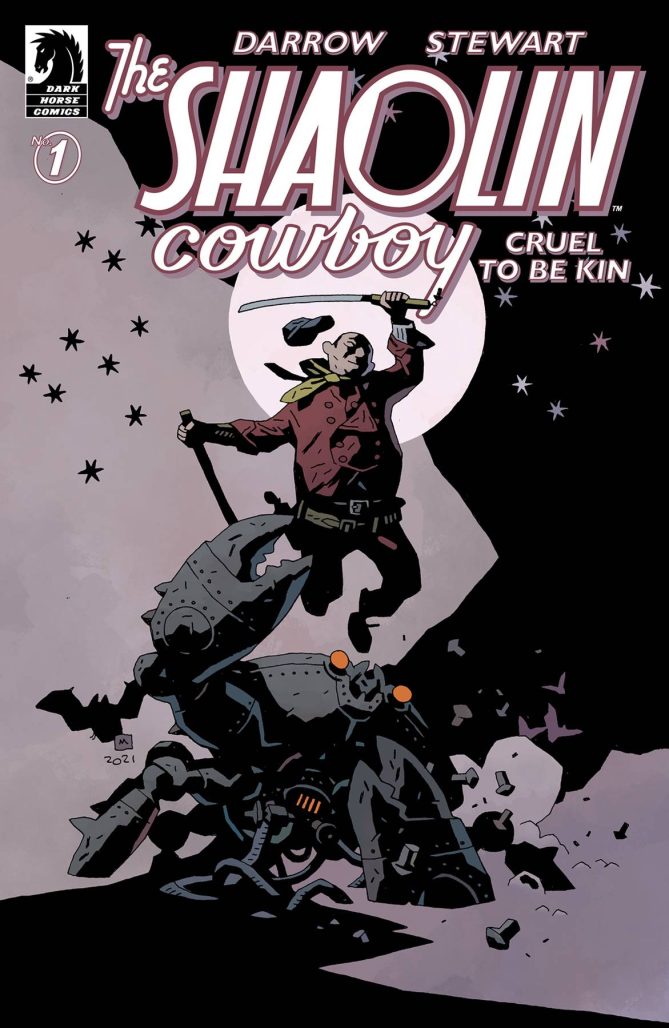
RICARDO SERRANO: Shaolin Cowboy’s trajectory seems to relish in the absurd and it ups the ante in that regard in every new story. And yet, there’s a very bizarre sense of satire behind it all. What was on your mind when coming up with this latest chapter?
GEOF DARROW: I never know what’ll come to me when I start thinking about new projects. For the new Shaolin Cowboy comic, I remember I was watching some National Geographic special that had something to do with Komodo dragons, how the male of the species often eat their newly hatched offspring to remove any competition. That got me thinking about parenting in the most absurd way.
A thing that always drives me is thinking about family choice. There’s your family, your blood family, and there’s the family that you choose yourself. There’s a lot of that in “Cruel To Be Kin,” only it might be done from a Komodo dragon’s own point of view and how it might find a father figure in a most unconventional candidate.
It’s funny, but I think I’ve only ever really sat down to write a script just once in my life. That was for this aborted Shaolin Cowboy animated film that we were working on in Japan. In most cases, I just kind of plot out a story from something I saw or read that stayed with me. In this case, it was Komodo dragons. It also happens when I’m drawing. Something I see makes an impression and it makes me want to draw it in somewhere. I mean, sometimes it’s just an excuse for me to draw. Whatever it is, it’s always something that grabs on to my mind and doesn’t let go.
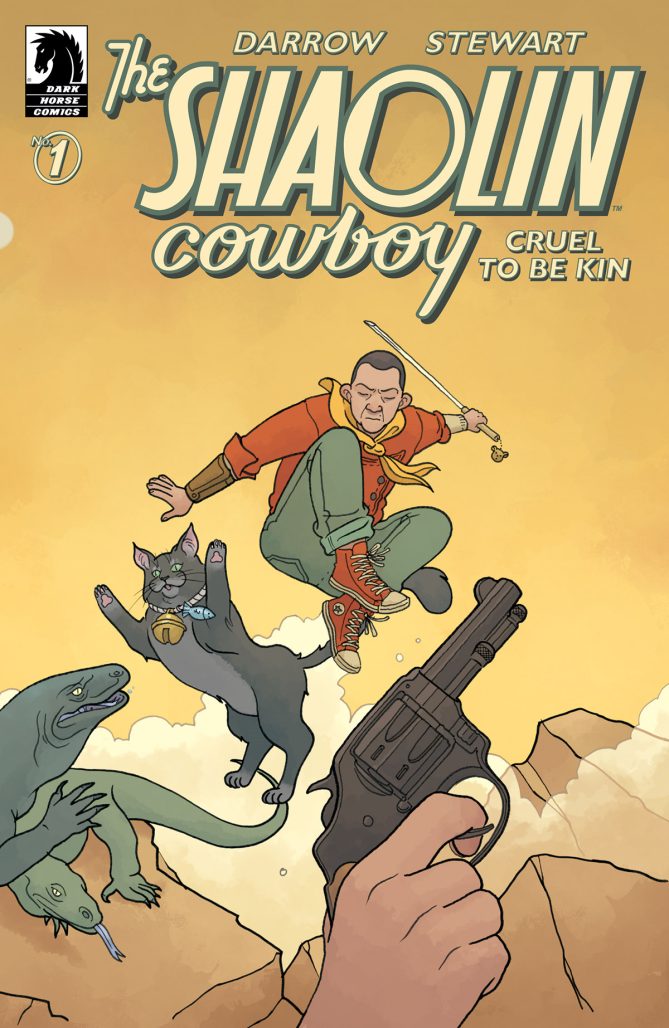
SERRANO: Do you think this kind of approach explains your highly detailed art style? Being on a constant state of absorption?
DARROW: Well, a lot of it comes to from being an admirer of and friends with Moebius. He would always talk about the process of creating worlds being about creating environments. All this stuff I put in my work is to sort of create a world and an environment. It could be seen as useless details, but at the same time it kind of creates a place in every sense of the word.
Each panel is kind of its own world. That might be a bit pretentious to say, but it explains it all a bit somehow. I’ll have dogs doing things in the background, people arguing over some small thing, or prehistoric animals chasing birds all to create a sense of place. Artists don’t usually have time to do that stuff. I take way too much time on that kind of stuff. Some of it might be throwaway detail, but I think it adds something to the experience.
SERRANO: In a way, then, densely populated worlds (with people and environmental details sharing equal narrative weight) are conducive to more layered storytelling possibilities.
DARROW: Yeah, and I think Moebius is one of the best examples of that. For me, it’s not even about his style so much as it is about his thoughtfulness in his drawings and his compositions. It was never about attention to detail for detail’s sake. It’s generally there to add something to the image. Moebius was a world builder before there were a lot of world builders. I think Jack Kirby was the first world builder in comics. I mean, the Marvel Universe is Jack Kirby’s Universe. He could do anything. I immediately knew that Moebius was a huge fan of Kirby when looking at his work.
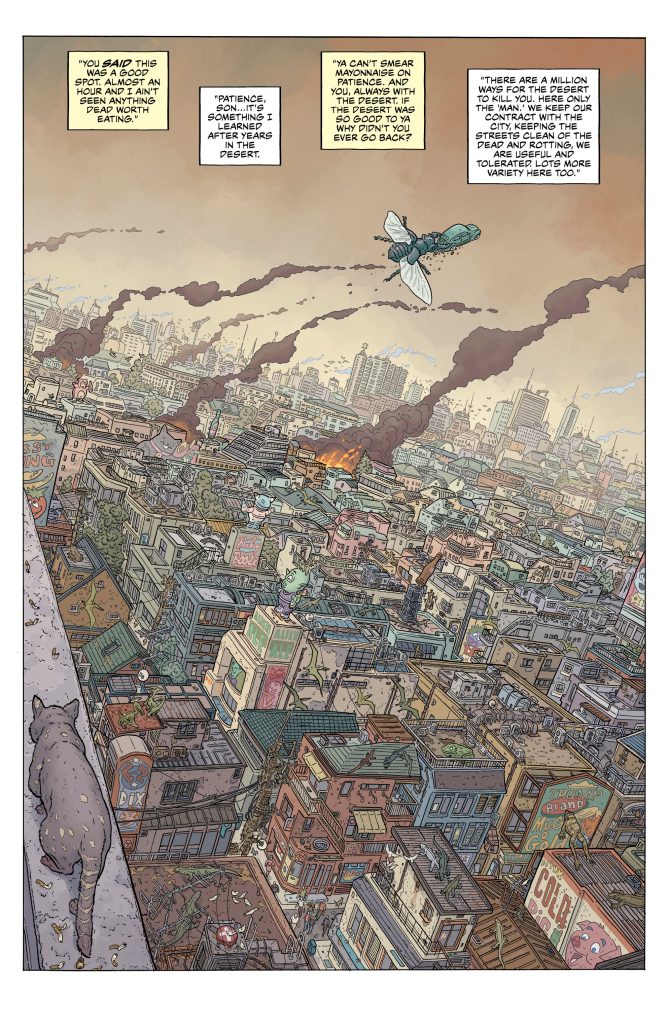
SERRANO: I’m always fascinated by the amount of graffiti, cheap fake ads, and empty cans and bottles you can find littered in every page of Shaolin Cowboy. I mean, even the hordes of zombies in “Shemp Buffet” are covered in unique tattoos. It even features heavily in your other work, especially Hard Boiled. What brings you back to these elements?
DARROW: In terms of the cans, I make it a point to show the environment littered with them because whenever I go to enjoy beautiful nature, there’s garbage. I mean, I don’t think you can go anywhere and not see it. I worry over it.
I mean, if you’re going to take your six-pack to the woods, pack the used cans and take them with you. Leave nature the way you found it. It bothers me how people loiter. Then I feel like a hypocrite because I go off and draw guns by the dozens in my stories, even though I’m really not for them.
SERRANO: I was going to say that. I don’t feel your comics come off as pro-gun or anything of the sort. It’s more like a comment on how present they are in our culture, how much Americans in particular embrace them.
DARROW: This whole thing is cultural. There are so many guns in America. You know, I’m waiting for someone to say that the war in Ukraine wouldn’t have happened if they had looser gun laws, or whatever. I haven’t heard it yet, but I wouldn’t be surprised if it comes up. That’s the way we reason in America relating to guns.
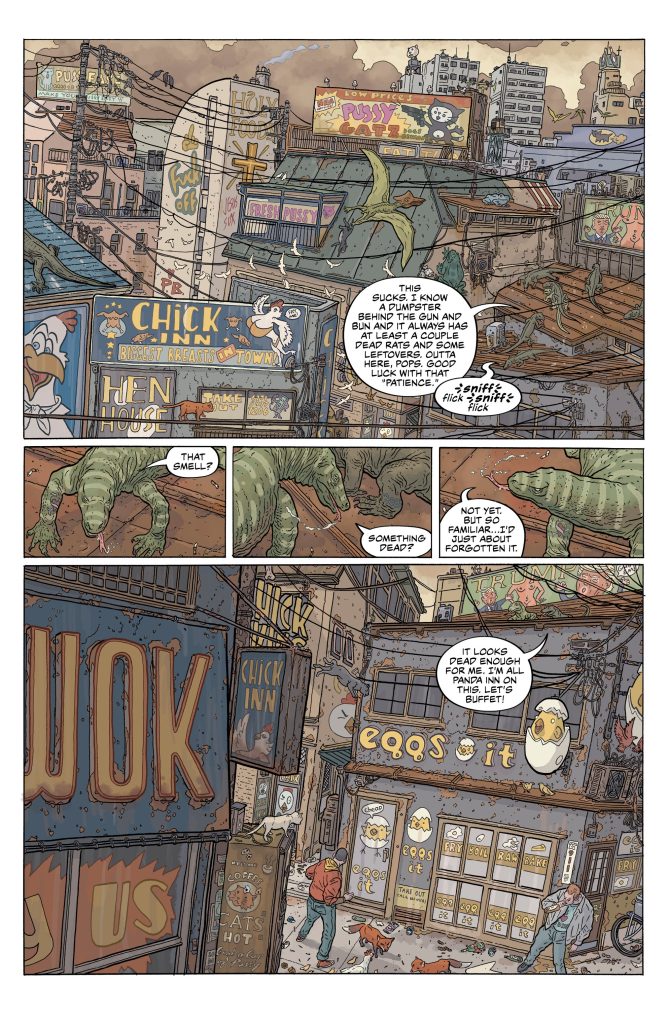
SERRANO: You’ve spoken at length about influences, on how Yojimbo, Westerns, and Akira Kurosawa films figure into your work. Did you bring other things you wanted to experiment with for this arc?
DARROW: I’ve had my little spaghetti western things in there from the very beginning. Look, I’ve always wanted to draw a guy in a poncho. Back then for me, when I was a kid, we didn’t have the Marvel movies. We had the Man with No Name, Zatōichi, Yojimbo. Those were my heroes, the archetypes I grew up with.
I’m of the generation that had tons of cowboy TV shows as well. One out of four or five TV shows back then were Westerns. I mean, it was just amazing. Then they were all gone and we moved on to Detective shows. Then it was medical shows. But my original hero was the guy that comes into town and does the right thing.
SERRANO: That’s interesting in that, when you think of it, the cowboy and the samurai come into a situation already knowing why things are so bad with the world without feeling the need to go on moralistic rants about it. You know where Superman’s moral compass points to. Not so much with the Man with No Name. They just act.
DARROW: Walter Hill, the director of The Warriors (1979), always says that you should know who your character are by how they act. The audience show get to know them by their actions. They become deeper characters because they don’t wear their morals on their clothing.
I think one of the greatest movies of the century, probably the greatest for me, is Mad Max: Fury Road. You see a lot of what we’re talking about in that movie. Max is not even the central character, really. But he’s kind of like Clint Eastwood in The Good, The Bad, and The Ugly. He’s the motor, and he kind of resolves things, but he doesn’t get in the way of Furiosa if it means getting things done. She ends up being the more interesting character because of it.
Still, the things in the movie just happen to Max. That’s what I like about doing this comic. Things just happen to my character. He reacts to them but he’s not looking to change the world. And then sometimes doing what you think is the right thing ends up not going so well. You start thinking if too much violence was ever the real answer.
SERRANO: And we get to see that through their behavior. We don’t need Max to tell us he believes in Furiosa or supports her. His actions speak for themselves.
Take Yojimbo. A ronin comes into a town—you always have an homage to the beginning of that movie somewhere—and a dog comes out of an alley with a human hand in its mouth. That is the greatest setup of all time in movies to me, because it immediately tells you this is not a good place. There’s a lot of bad stuff going down here. And yet the character still goes in there. He just can’t help himself.
You don’t entirely know why he does the things he does, but you know he does the right thing. And that’s what counts.
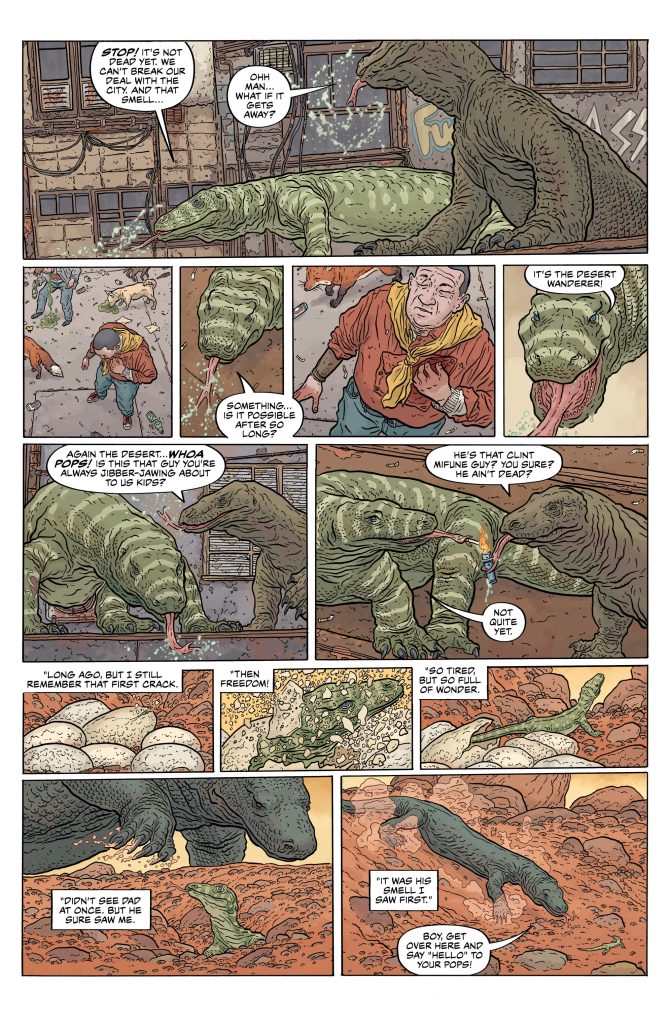
SERRANO: Thanks for your time and I look forward to seeing what Komodo dragons bring to the table in the wider world of Shaolin Cowboy.
DARROW: Thanks for the talk.
Shaolin Cowboy: Cruel to be Kin #1 will be published by Dark Horse and is slated for a May 18th release.


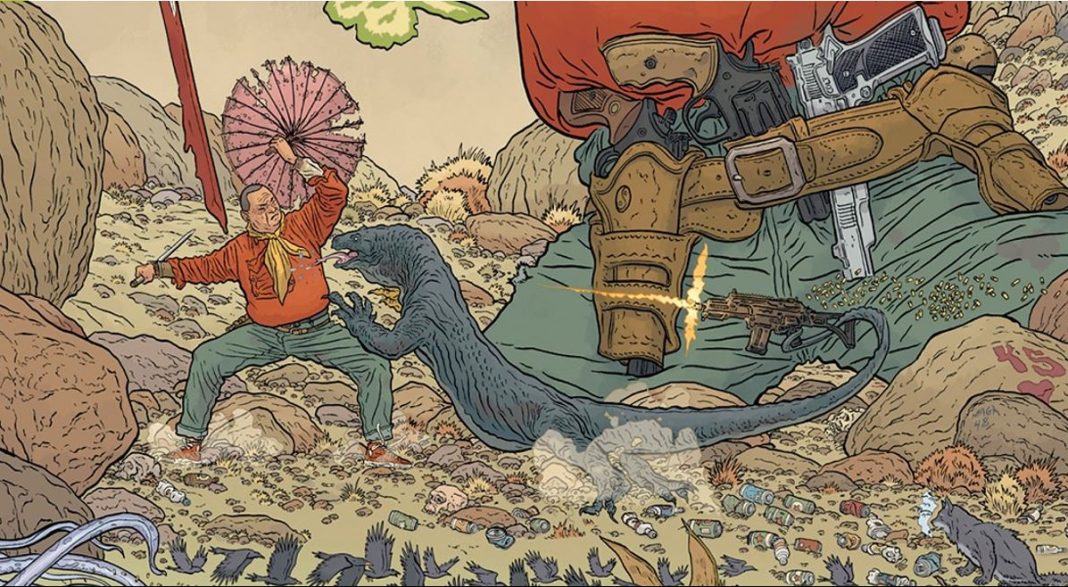
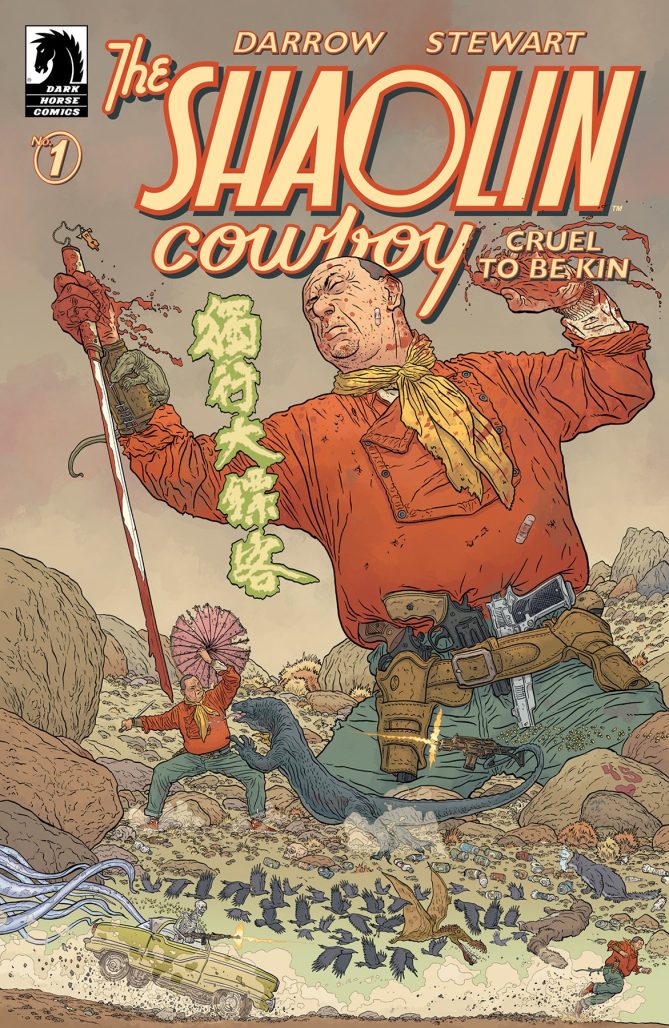


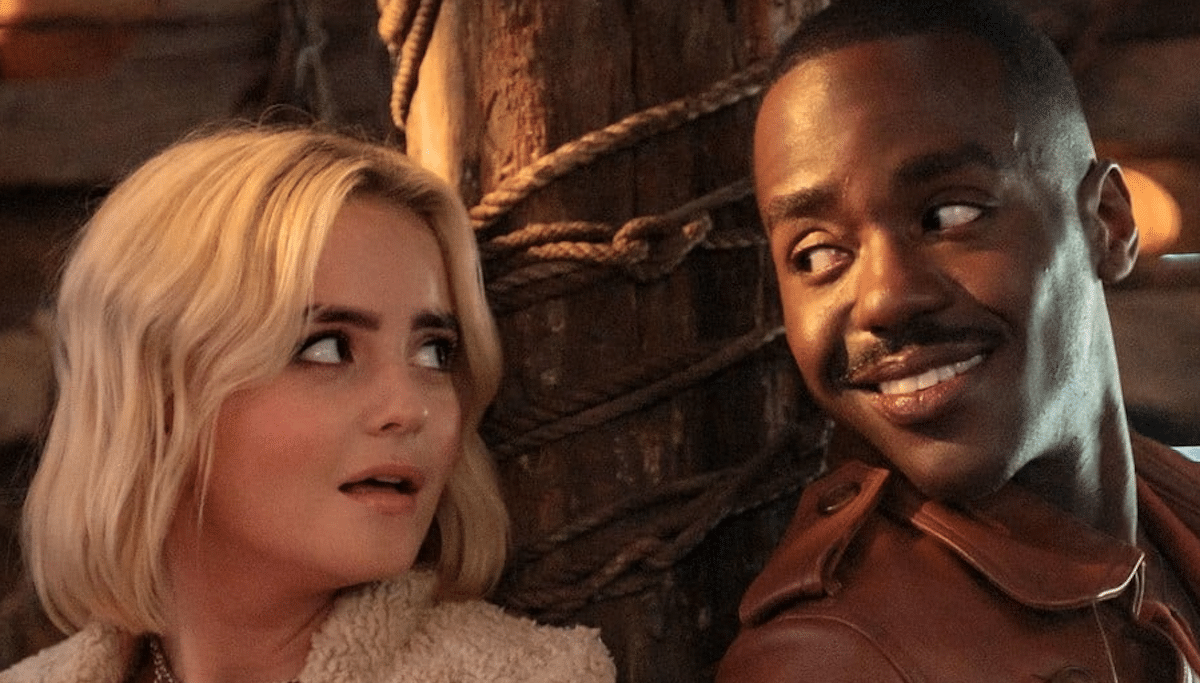


I’m really looking forward to the new part of Shaolin Cowboy. When will it be updated?
Comments are closed.